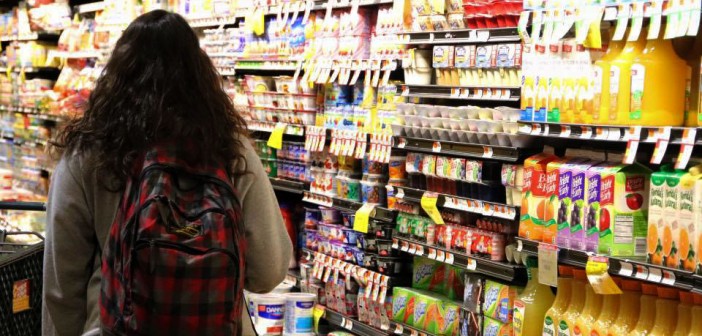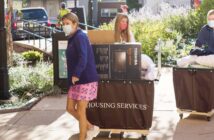The United States Department of Agriculture defines a food desert as “a low-income census tract where a substantial number or share of residents have limited access to a supermarket or large grocery store.”
The list of food deserts in the United States is long, and on that list is South Side Bethlehem.
Lehigh political science professor Karen Beck Pooley suggests Bethlehem may be better described as a “food swamp,” rather than a food desert. She said a food desert is a neighborhood “where truly you cannot find calories.”
Pooley said food swamps have a significant amount of food available, but it is the quality and nutrition of the food that is limited.
“You wouldn’t go hungry,” she said. “But the food that is there is not necessarily healthy food.”
Luke Rider, a senior at Liberty High School in Bethlehem, has noticed this as well. He is specifically concerned with the lack of local, affordable farmers’ markets in Bethlehem.
“It seems as though the only option for food for people, especially in the lower class, is these fast food chains and dine-in places,” Rider said.
Rider suggested farmers’ markets would provide the Bethlehem community with something that is currently lacking: more sustainable food at their fingertips.
CTown Supermarket and Ahart’s Market are smaller grocers located on the South Side, but community members have to travel further to access supermarkets with a larger selection of quality goods.
“Getting groceries nearby, especially ones that will be able to sustain your family and help their health is becoming, not impossible, but I feel like it needs to become easier to… anyone who might struggle with food, and affordability of food, and the quality of food,” Rider said.
Mike Rogers lives with his son and extended family in South Bethlehem. He buys groceries at Walmart or Price Right, neither of which are on the Southside. Rogers said it doesn’t matter much to him personally, but if these stores were closer it would be easier and take less time to grocery shop for his family.
Pooley said Bethlehem’s food insecurity has historic roots in how investments were made in different neighborhoods in the 1930s. Redlining was used to suggest which neighborhoods were good for investment and which were not.
She said places with older infrastructure, dense populations, or where shops and houses were packed together would often be designated as areas bad for investment.
“It also had to do, at the time, with places that were more diverse or diverse at all, which would typically be redlined or considered bad bets for investment,” Pooley said.
She said people could lawfully discriminate against who they sold or rented houses to until the 1960s, so there was systemic disinvestment in certain neighborhoods.
The effects of decades of systemic racism remain apparent in Bethlehem’s food instability today.
“Almost a hundred years after those maps were made, white residents are way more likely to live closer to a grocery store, way more likely to have access to healthy foods than minority residents of almost any city,” Pooley said.
Lower access to nutritious food can have adverse effects on people’s health and increase risks of health conditions like diabetes or obesity. Pooley said communities like Bethlehem have been hit harder because of this trend.
COVID-19 has also affected the supply of goods for smaller grocers in Bethlehem.
Franklin Rodriguez, manager at CTown, said it has been more difficult to sustain the products he sells. As one of the only grocers on the Southside, CTown has a large community to provide for, and when COVID-19 hit, certain products were harder to stock
“It is challenging, but we find a way to maintain,” Rodriguez said.
Pooley suggested new funding could be made available to open larger grocers, retailers that already exist like corner stores or gas stations could work to carry healthier options and that access to online grocery shopping should be guaranteed for all.
Rider suggested people could take part in opportunities for community service in order to tackle this problem and help set up more farmers’ markets in Bethlehem as well.
“I know it would take a little bit of time, but we have all the time in the world to help with an issue this large,” Rider said.






Comment policy
Comments posted to The Brown and White website are reviewed by a moderator before being approved. Incendiary speech or harassing language, including comments targeted at individuals, may be deemed unacceptable and not published. Spam and other soliciting will also be declined.
The Brown and White also reserves the right to not publish entirely anonymous comments.
10 Comments
What a crock this article is as access to Giant & Weis is no harder for Southsiders than Northsiders just across Fahy bridge. Both stores offer delivery options.
I believe there has to be some personal responsibility regarding what anyone decides to feed themselves or their families. Im a hispanic male and I can easily lean on the excuse of there not being healthy rood options in poorer neighborhoods. The bottom line is that the current American diet as a whole is abysmal at best. Most of our foods are GMO’d and or have dangerous chemicals in them to keep them viable longer on the shelves. A great deal of advances in terms of food production are governed by profit and not what is best for the populace. We can see this just by looking around. People are over weight in this era more so than ever. Diabetes is rampant and there are numerous illnesses that are directly caused by what we put into our bodies. Societal changes including the costs of raising a family along with its challenges of trying to keep a balance of time management in which we can actually enjoy one another as a family have been greatly strained. As a result many families seek a quick inexpensive means as to feed themselves after a hard days work. Most just don’t have the energy nor time to cook a meal after work. So its not so cut and dry as what exactly is the cause of a certain neighborhood supposedly not having access to healthier food hence healthier options. Most see the cost of these healthier options as being prohibitive. Just look at the prices of organic foods versus their counter parts. I believe that needs to be addressed more so than bringing in more options of where to shop in any given area. How about healthier foods that wont cost so much more so that those of us that live in areas considered to be of lower income can perhaps save some money and then we can move on up to the nicer side of town?
Ahart food is no good. The meats are brown on one side. The veggies are no good most of the time. I rather travel further or go to ctown to do my shopping.
Louis they are not really concerned with the residents that lives in the area. I mean look around all you see is everything catered to the college students. That’s one of the reasons why the price is so high. Almost every corner there’s a bar. This article is more or less for the college students not the residents of Southside Bethlehem.
Yes, yes. It’s racism. Always racism. Look at your leaders, not racism from 50 years ago. They promise you the world, you vote for them then you end up in the “food desert”… why? because they lie to you. Elect responsible leaders who do what they say. You get the government you vote for.
When all other logic fails, shout “Racism”. Got it.
…said the privileged white guy.
I think you need to Apologize too the People that work at CTOWN; BECAUSE OF THAT TERRIBLE ARTICLE ABOUT SOUTHBETHLEHEM BEING A FOOD DESERT! PEOPLE. ARE GONNA GET THE IDEA THAT THEY HAVE UNHEALTHY FOOD THERE OR LOWER QUALITY PRODUCTS ! YOU ARE WRONG!I LIVE RIGHT THERE AND I AM IN THERE EVERYDAY
THEY KEEP THE STORE
SO CLEAN SO FRIENDLY! AND FIRST OF ALL
EVERYBODY THAT WORKS THERE THE GUYS STOCKING THE SHELVES THE DELI THE MEAT CUTTERS AND MANAGEMENT CASHIERS THE LADIES COOKING THE HOTFOOD! DESERVE A ROUND OF APPLAUSE NOT AN ARTICLE WRITTEN BY SOMEONE THAT PROBABLY NEVER SHOPPED THERE!
Why didn’t they put in a supermarket instead of the expensive high rises?
The site of Ahart’s Market used to be a Food Fair and subsequently a Pantry Pride, chain supermarkets based in Philadelphia. That was in the late ’60s. I worked there. So you have to ask yourselves, what happened between then and now to change the demographics.